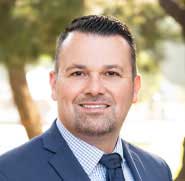Measuring Practice Success and Patient Care:
Measuring eConsult Clinical Quality
Eric Urquiza, Sr. Vice President of Operations & Client Experience at AristaMD
eConsult clinical quality can be measured by the number of replaced visits. 79% is a good replaced visit rate. Across all eConsults, we average over 74% of replaced visits. This statistic is affected by:
- Quality eConsults include relevant clinical details and a specific clinical question. Without this information, you’ll see few replaced visits.
- AristaMD offers two tools to help: A Work-up checklist is displayed for most conditions, which tells you what the specialist will need to return a high-quality response. Registered nurses that curate the eConsult for the PCP. Our nurses have extensive experience, and the eConsults they prepare have a much higher replaced visit rate.
- The characteristics of the condition also impact the replaced visit rate. What I’m referencing are issues like:
- A different specialty is needed.
- The specialist suspects a new or different diagnosis. While this does not always mean a face-to-face visit will be recommended, it can reveal an emergent condition.
Each avoided visit saves the risk holder between $500-$1000 per avoided referral, including a 10% reduction in the number of visits per referral.
Studies show that improved access and preventative care decreases disease and mortality. By addressing health problems before they require emergency intervention, both patients and the health system save money and see better outcomes. How do you know the advice you receive from eConsults is working to prevent disease escalation? Using population health data, like hospitalization and readmission rates and emergency discharges, can give you confidence that your program is effective. Referral volume will decrease as the use of eConsults increases. Reporting from AristaMD offers quality metrics for your practice.

3 Ways eConsults Reduce Costs and Improve the Quality of Healthcare
eConsults reduce costs and offer an ideal solution for reducing costs and improving healthcare quality. Healthcare spending is rising, and healthcare organizations focus on improving patient satisfaction scores. These patients are uninsured, underinsured, or often have high-deductible health plans that make them reluctant to visit a specialist. Learn more about three specific ways immediate access to specialty care within the primary care office reduces patient healthcare costs.
Patients with high deductible plans are most likely to avoid seeking the care they need due to expensive out-of-pocket costs. According to the National Health Center for Statistics, almost 40 percent of the population ages 18 to 64 have high deductible health plans. By forgoing necessary care to save money, many patients’ conditions deteriorate to the point where they require a higher degree of care (including hospitalization), resulting in higher out-of-pocket costs and additional costs to payers and health systems. This dynamic is unacceptable and must be addressed within the shift to value-based care.

Eric Urquiza
Sr. Vice President of Operations & Client Experience at AristaMD
Eric has 20 years of experience driving transformational healthcare IT programs, advancing patient care, improving access and outcomes for patients through technological solutions. He has been successful in leading many strategic client relationships and increasing provider adoption of telehealth solutions, ultimately leading to strong efficacy for underserved populations throughout the country. Eric holds a Master of Business Administration from the University of Redlands.
